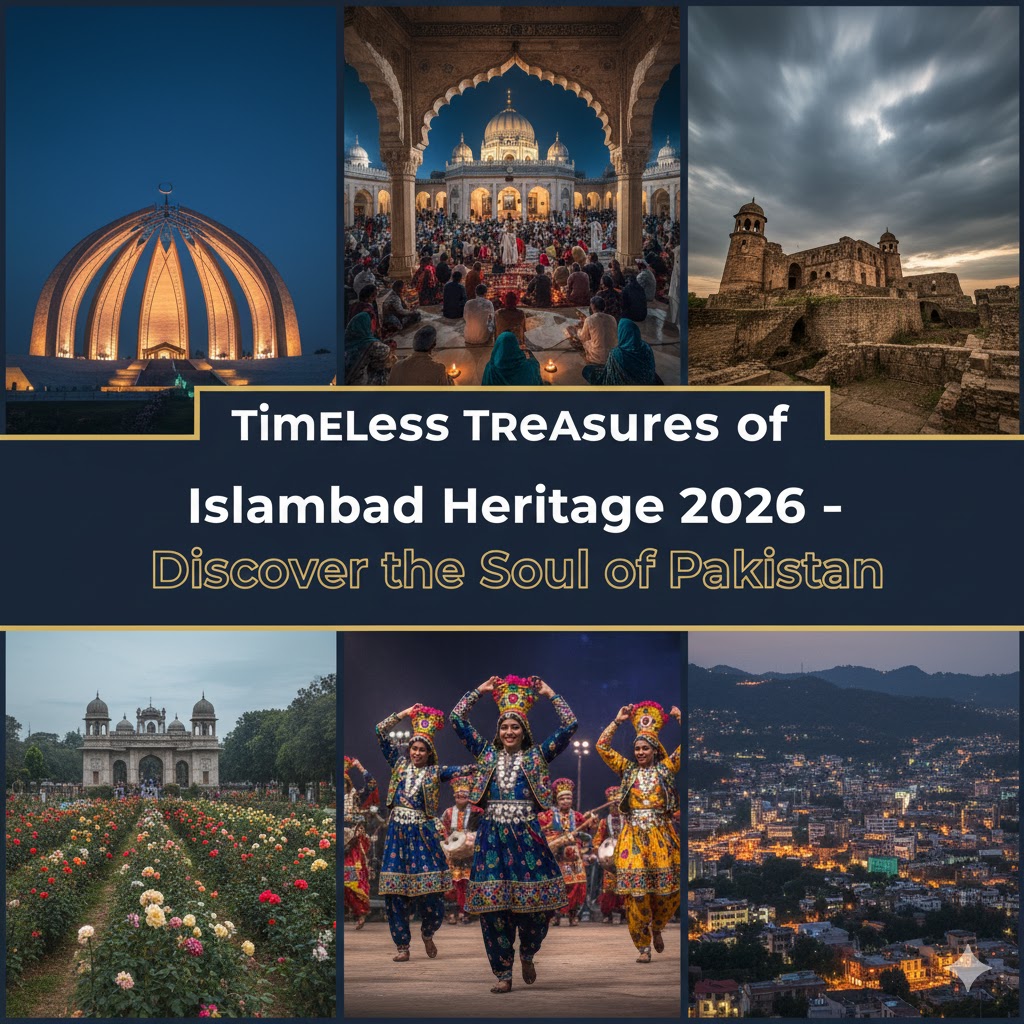Table of Contents – Cultural Heritage Sites in Islamabad
- Introduction – The Modern Capital with Ancient Roots
- Saidpur Village – Where History Meets Harmony
- Faisal Mosque – Architectural Wonder of Faith
- Lok Virsa Museum – Preserving Pakistan’s Living Traditions
- Golra Sharif Shrine – The Spiritual Soul of Islamabad
- Rawat Fort – Echoes of the Gakhar Dynasty
- Shah Allah Ditta Caves – Ancient Buddhist Whispers
- Pakistan Monument & Museum – A Modern Symbol of Unity
- Rose and Jasmine Garden – Cultural Festivals and Public Art
- Conclusion – Islamabad’s Ever-Evolving Cultural Identity

1. Introduction – The Modern Capital with Ancient Roots
Islamabad, known for its serene beauty and planned design, also hides a tapestry of history beneath its modern skyline. Long before it became Pakistan’s capital in 1967, this region was part of the ancient Gandhara civilization, echoing stories of traders, saints, and poets who walked its hills and valleys.
Every road and corner offers a blend of heritage and modernity — from stone-carved Buddhist sites to contemporary museums that celebrate Pakistan’s cultural mosaic. Islamabad is more than a city; it’s a living museum of faith, art, and architecture.
Local Tip: Start your heritage tour early morning to avoid traffic and witness the golden sunrise over the Margalla Hills.

2. Saidpur Village – Where History Meets Harmony
Nestled on the slopes of the Margalla Hills, Saidpur Village is a centuries-old settlement that has transformed into a living heritage museum. Founded during the Mughal era and later renovated by the Metropolitan Corporation Islamabad, it represents religious coexistence and cultural evolution.
The village houses ancient Hindu temples, a Sikh gurdwara, and an old church structure — symbols of the region’s pluralistic past. Today, it’s a hub for artists, craftsmen, and travelers who wander its cobbled paths lined with cafés and art galleries.
Hidden Spot: Visit the old water tank behind the temple site — locals believe its water once held spiritual purity used by pilgrims.
Local Tip: Enjoy a traditional breakfast of halwa puri and kashmiri chai at Des Pardes Restaurant for an authentic flavor of Islamabad’s rural charm.
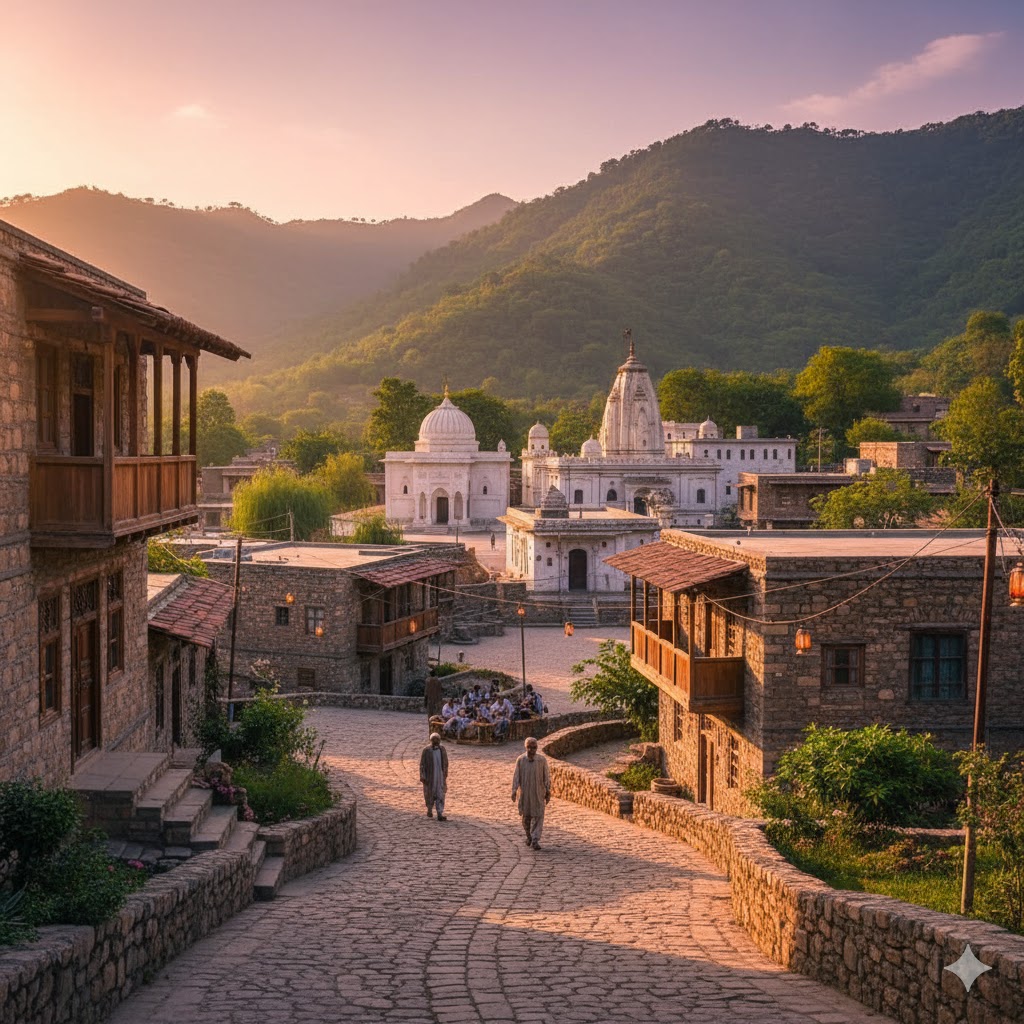
3. Faisal Mosque – Architectural Wonder of Faith
Designed by Turkish architect Vedat Dalokay and completed in 1986, Faisal Mosque is not just a place of worship but a national symbol of modern Islamic architecture. With its tent-inspired roof and four minarets, the mosque stands at the base of the Margalla Hills like a white marble jewel.
Its design represents simplicity and grandeur — the prayer hall can accommodate over 100,000 worshippers. The mosque complex includes reflecting pools and a library dedicated to Islamic art and literature.
Hidden Detail: The architect intentionally avoided traditional domes to create a structure that blends spirituality with modern design philosophy.
Local Tip: Arrive just before Maghrib prayer to see the sun set behind the minarets and the mosque’s white walls turn golden.

4. Lok Virsa Museum – Preserving Pakistan’s Living Traditions
The Lok Virsa Heritage Museum, established in 1974, is a treasure house of Pakistan’s folk culture and ethnology. It celebrates the country’s linguistic, musical, and craft diversity through interactive exhibits and folk performances.
Each hall represents a different region — Sindh, Punjab, Balochistan, KP, and Gilgit-Baltistan — showcasing clothing, ceramics, and traditional musical instruments. The museum’s courtyard often hosts qawwali nights and craft fairs, making it a must-visit for travelers who wish to understand Pakistan’s soul.
Hidden Experience: The adjacent Heritage Reference Library contains rare recordings of folk songs and oral histories collected from remote villages.
Local Tip: Visit during the annual Lok Mela (Folk Festival of Pakistan) in March to enjoy regional food stalls and live performances.

5. Golra Sharif Shrine – The Spiritual Soul of Islamabad
Located on the western edge of Islamabad, Golra Sharif is among the most spiritually significant heritage sites in the capital. The shrine of Pir Meher Ali Shah (RA), a revered Sufi saint of the Chishti order, attracts thousands of devotees and travelers seeking blessings and tranquility.
Established in the late 19th century, the shrine’s marble courtyard, intricately carved wooden doors, and Persian calligraphy reflect Mughal craftsmanship. The annual Urs festival, celebrated in November, features qawwali performances, spiritual gatherings, and free meals (langar) — continuing centuries-old Sufi hospitality.
Hidden Gem: The nearby Golra Railway Station, built in 1882, houses a small heritage museum displaying British-era locomotives and railway memorabilia.
Local Tip: Visit the shrine early morning on weekdays to avoid crowds and hear live qawwali sessions under the shade of old banyan trees.

6. Rawat Fort – Echoes of the Gakhar Dynasty
Around 15 miles from Islamabad, the Rawat Fort stands as a testament to the region’s medieval past. Built in the 15th century by the Gakhar chief Sultan Sarang Khan, the fort served as both a military outpost and a caravanserai along the ancient trade route connecting Kabul and Kashmir.
Within its thick stone walls lie the remains of a small mosque and Sarang Khan’s mausoleum — symbols of valor and architectural simplicity. The fort’s vantage point offers panoramic views of the Potohar Plateau, making it a favorite for history enthusiasts and photographers alike.
Historical Insight: The site once witnessed fierce battles between the Gakhars and Sher Shah Suri’s forces, leaving behind layers of history embedded in its ruins.
Local Tip: Bring a flashlight for exploring the underground chambers during daytime — they remain cool even in peak summer.

7. Shah Allah Ditta Caves – Ancient Buddhist Whispers
Tucked away in the Margalla foothills, the Shah Allah Ditta Caves are one of Islamabad’s oldest archaeological treasures, dating back over 2,400 years. These caves once served as meditation chambers for Buddhist monks during the Gandhara era, and later became a resting site for Mughal travelers.
The caves bear faint wall paintings and carvings from ancient times. Nearby, an old stepwell (baoli) and Mughal-era mosque add layers to the site’s historical continuity. Today, the village around the caves serves as a living heritage community, home to Sufi gatherings, poetry nights, and traditional tea houses.
Hidden Experience: Don’t miss the natural spring flowing near the caves — locals call it “Zinda Pani,” believed to be spiritually blessed.
Local Tip: Visit in the late afternoon to see golden light filtering through the trees, perfect for photography and peaceful reflection.
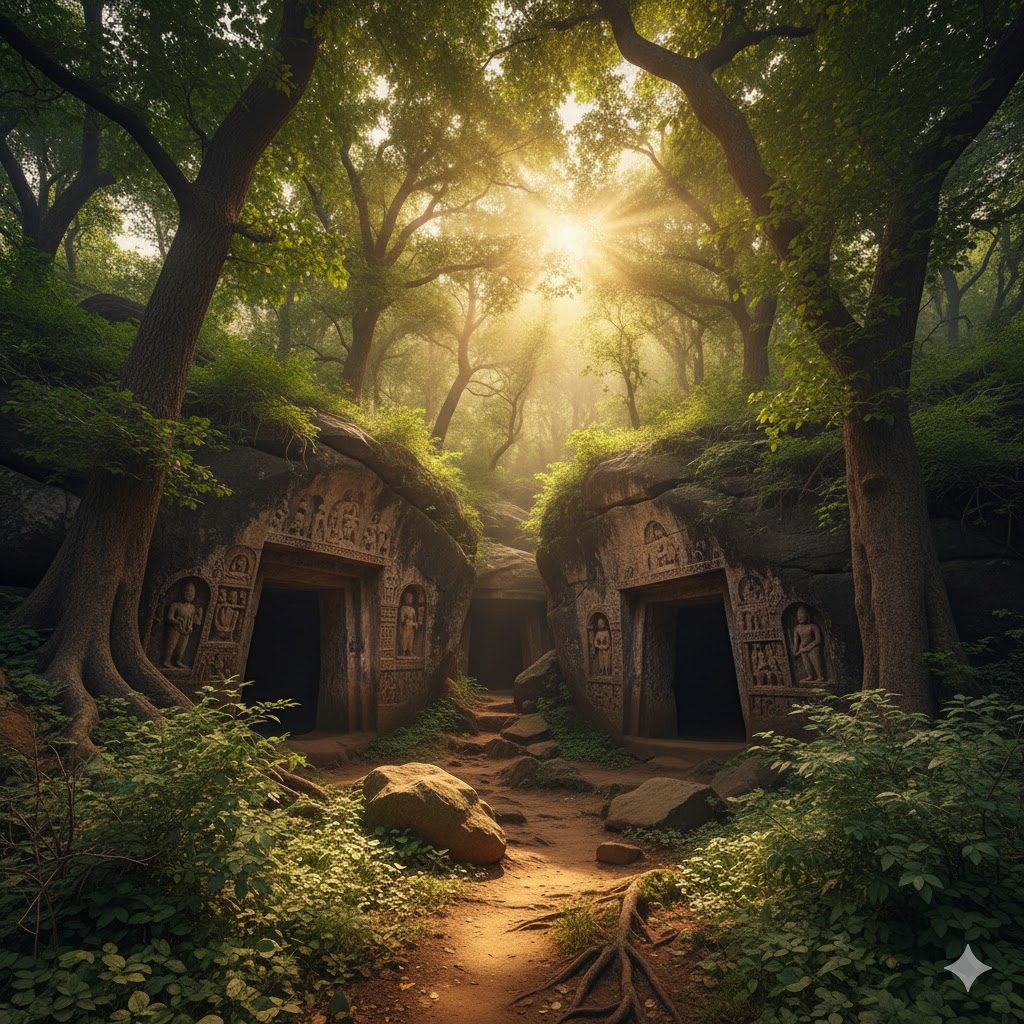
8. Pakistan Monument & Museum – A Modern Symbol of Unity
Rising on Shakarparian Hill, the Pakistan Monument is Islamabad’s most photographed national landmark. Shaped like a blooming flower with four petals, it represents Pakistan’s four provinces — Punjab, Sindh, Khyber Pakhtunkhwa, and Balochistan — united under one vision.
The adjacent Pakistan Monument Museum complements the structure by narrating the story of independence through 3D dioramas, digital exhibits, and preserved artifacts. The panoramic viewpoint nearby offers breathtaking views of Islamabad, especially at night when the monument glows against the city lights.
Hidden Detail: Inside the museum, look for the replica of the Lahore Resolution — one of Pakistan’s most iconic founding documents, preserved in interactive format.
Local Tip: Visit after sunset for night photography; the monument’s lighting creates a surreal backdrop against the dark skyline.
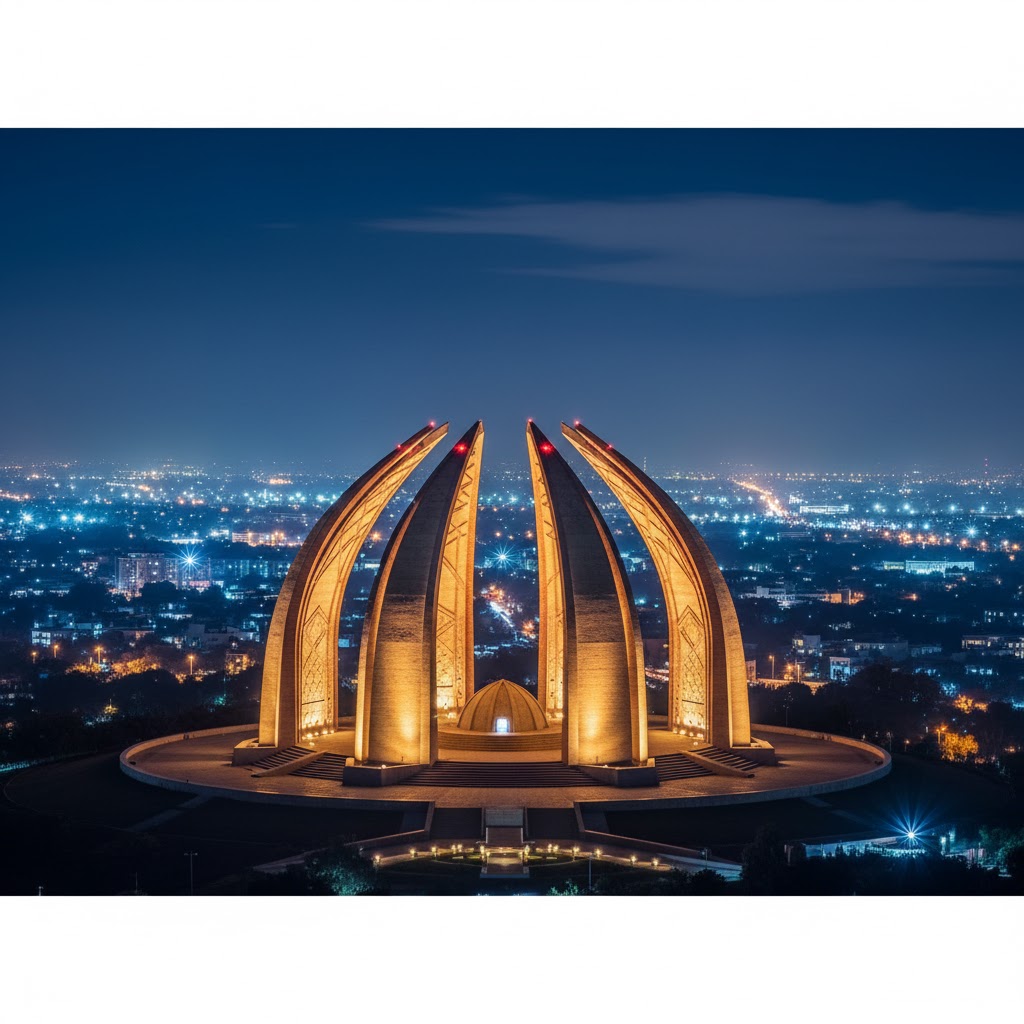
9. Rose and Jasmine Garden – Cultural Festivals and Public Art
Established in the 1970s, the Rose and Jasmine Garden is a serene cultural retreat near Aabpara. It features over 250 species of roses and serves as a venue for Islamabad’s annual Flower Show and Chrysanthemum Festival.
Beyond its floral beauty, the garden often hosts art exhibitions, Sufi concerts, and food festivals celebrating Islamabad’s community spirit. It’s one of the few open-air spaces where families, artists, and tourists mingle in a vibrant yet peaceful environment.
Hidden Gem: Visit during the “Islamabad Spring Festival” (March) when the park transforms into a carnival of colors with live craft booths and traditional music.
Local Tip: Pack a picnic and stay for sunset; you’ll often find students practicing music and photography enthusiasts capturing macro shots of blooming roses.
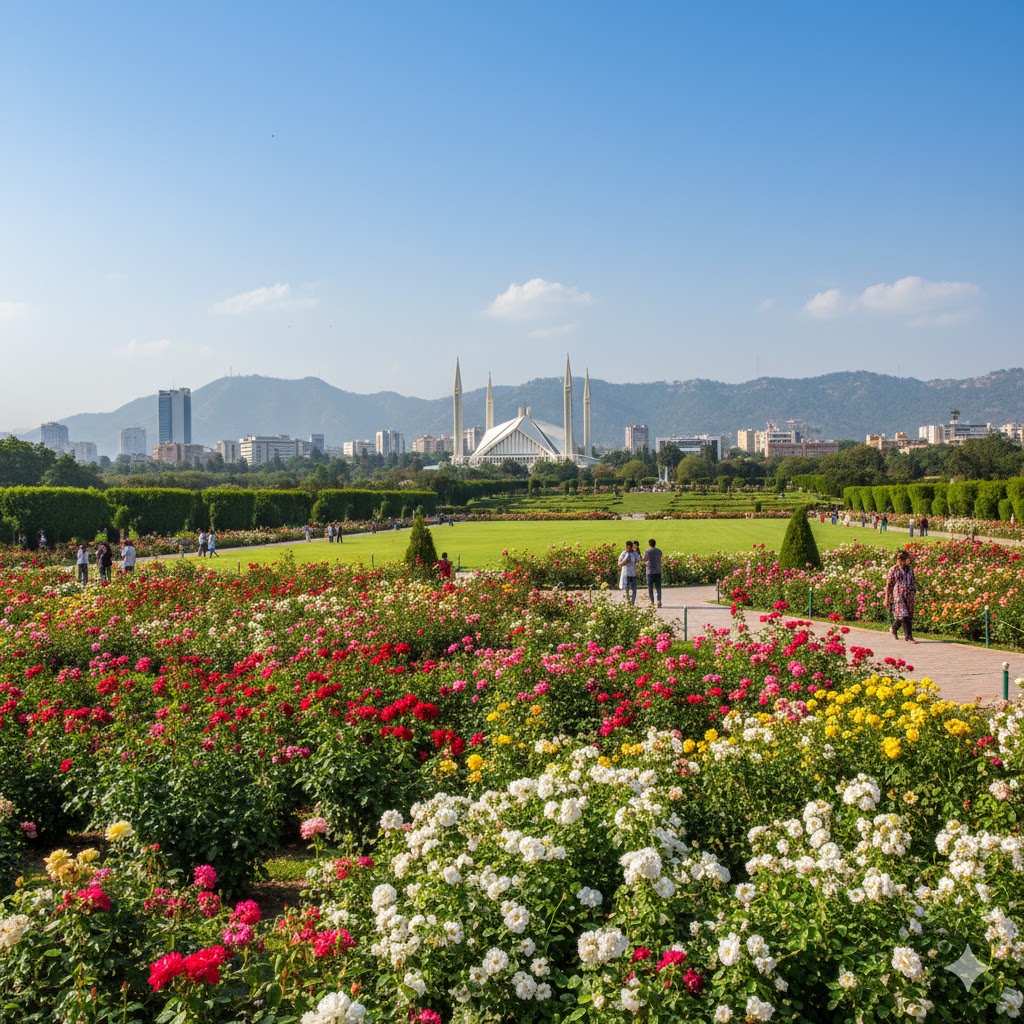
10. Conclusion – Islamabad’s Ever-Evolving Cultural Identity
Islamabad’s heritage is more than preserved stones or museums — it’s a living narrative of coexistence. From Sufi shrines and ancient Buddhist caves to national monuments, every site tells a story of Pakistan’s evolution from antiquity to modernity.
For travelers, each corner of the capital offers not just history but an emotion — the peace of Golra Sharif, the artistry of Lok Virsa, or the silence of Shah Allah Ditta’s ancient walls.
Whether you’re a photographer, a pilgrim, or a cultural explorer, Islamabad’s heritage sites promise timeless memories woven with art, faith, and human connection.
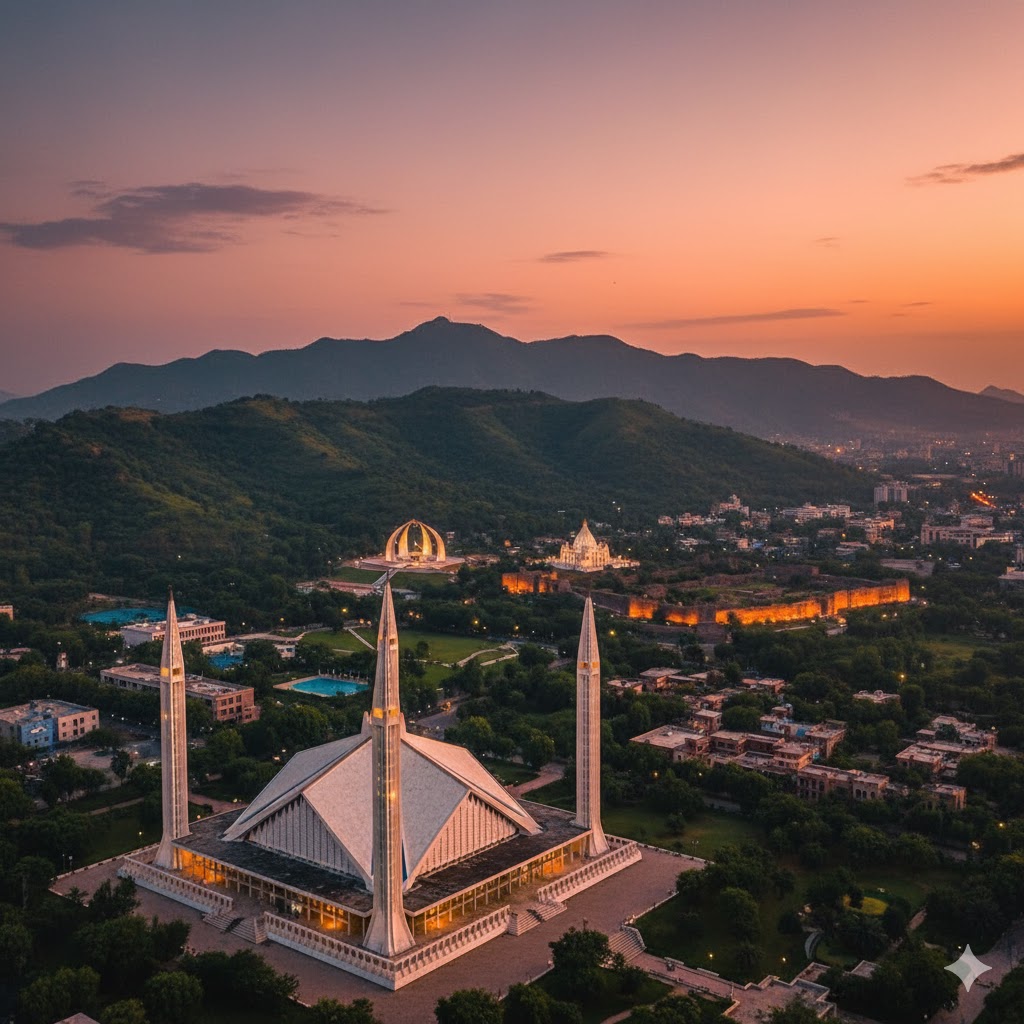
Must Read:
Sources:
- National Heritage & Culture Division – Government of Pakistan
- UNESCO World Heritage – Pakistan Sites
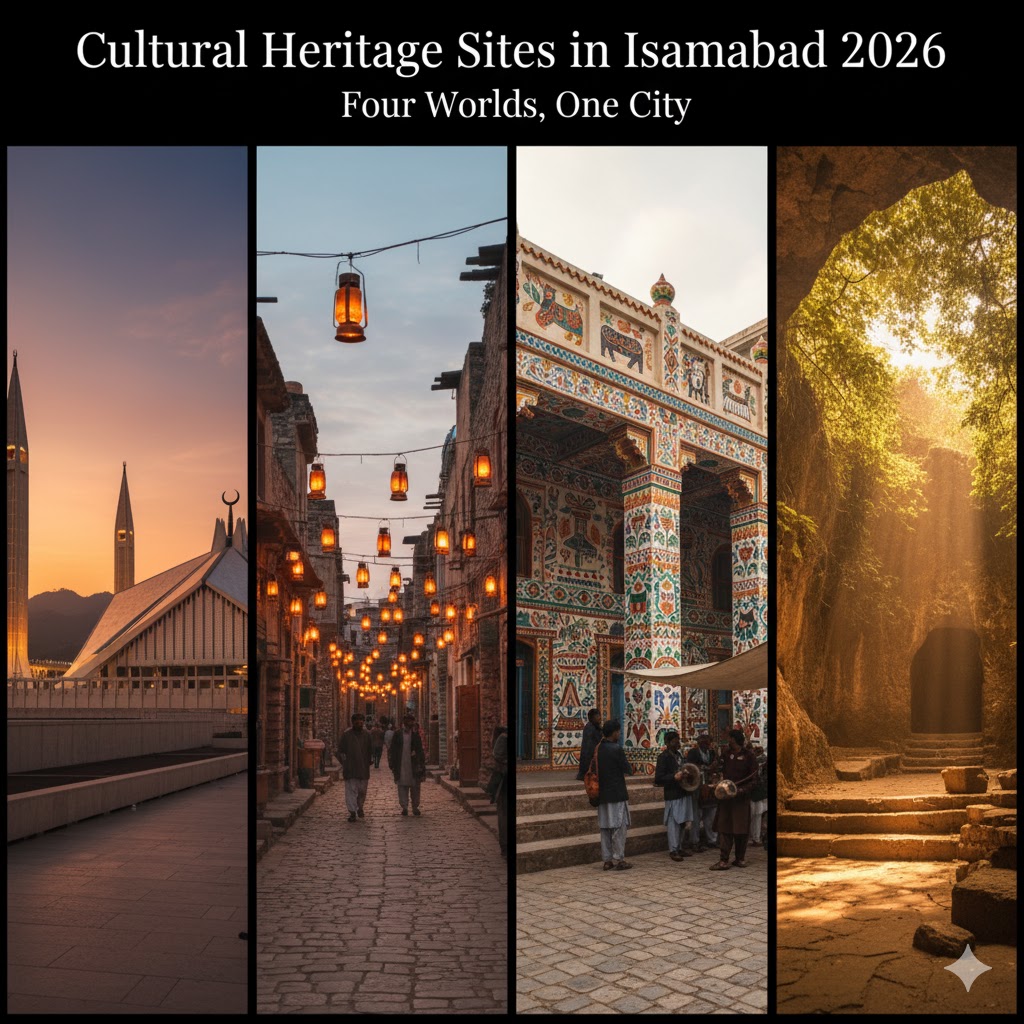
FAQs – Cultural Heritage Sites in Islamabad (2026)
1. Faisal Mosque – The Symbol of Modern Islamic Architecture
Q: What makes Faisal Mosque unique compared to other mosques in South Asia?
A: Unlike traditional domed mosques, Faisal Mosque’s tent-like structure combines modern geometry with Islamic calligraphy, symbolizing harmony between faith and innovation.
2. Saidpur Village – Islamabad’s Living Heritage
Q: When is the best time to visit Saidpur Village for cultural activities?
A: Visit in the evenings from Friday to Sunday when the village hosts live music, artisan stalls, and traditional rooftop dining with panoramic city views.
3. Lok Virsa Museum – The Cultural Pulse of Pakistan
Q: Does Lok Virsa Museum organize live cultural performances?
A: Yes, every weekend Lok Virsa hosts regional folk music shows, handicraft fairs, and seasonal festivals showcasing Pakistan’s diverse ethnic traditions.
4. Pakistan Museum of Natural History – The Scientific Heritage Hub
Q: Is the museum suitable for kids or educational trips?
A: Absolutely! The museum’s fossil gallery, earthquake simulator, and interactive exhibits make it perfect for students and families interested in learning science through fun.
5. Golra Sharif Shrine – The Spiritual Soul of Islamabad
Q: Can non-Muslim visitors visit Golra Sharif Shrine?
A: Yes, all respectful visitors are welcome. It’s a peaceful place of interfaith harmony, especially during the Urs festival when Sufi qawwali fills the air.
6. Rawat Fort – Echoes of the Gakhar Dynasty
Q: Are there guided tours available at Rawat Fort?
A: While not formally arranged, local history enthusiasts often volunteer as informal guides; it’s best to visit during daylight with a local companion.
7. Shah Allah Ditta Caves – Ancient Buddhist Whispers
Q: Is there any entry fee to visit the caves?
A: No entry fee is charged. However, small donations to local caretakers help preserve the site’s cleanliness and maintain access paths.
8. Pakistan Monument & Museum – A Modern Symbol of Unity
Q: What are the visiting hours for the Pakistan Monument Museum?
A: The museum opens daily from 9 a.m. to 7 p.m., except Mondays. Evening visits offer stunning night views of the monument and Islamabad skyline.
9. Rose and Jasmine Garden – Cultural Festivals and Public Art
Q: When does Islamabad’s Flower Show usually take place?
A: The annual Flower Show and Chrysanthemum Festival bloom every March–April, turning the garden into a colorful celebration of nature and culture.
10. Islamabad Heritage Trail – Connecting Old and New
Q: Is there a guided heritage trail connecting multiple sites?
A: Yes. The Islamabad Tourism Department offers guided “Heritage Walks” linking Saidpur, Lok Virsa, and Golra Sharif — ideal for first-time explorers.

